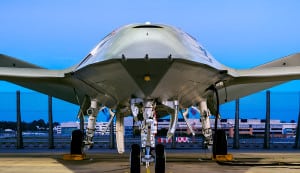
By Jay. A. Stout, Defense Opinion Writer.
The Navy desperately needs new ships, aircraft and weapons as it prepares for the coming war with China. But instead of procuring them in the numbers it needs, the service has wasted—and continues to waste—money on ill-considered programs. Examples include the Littoral Combat Ship, which has cost $60 billion—twice the initial projections.
An embarrassingly flawed concept that failed to meet its objectives, the Navy stopped its planned buy of 55 vessels at only 35 and has already retired seven, despite the fact that they completed only a fraction of their service lives.
Likewise, the Navy had planned to build the Zumwalt-class destroyer class around a revolutionary gun. The gun was a failure, and instead of procuring 32 of the cutting- edge destroyers, the Navy bought only three. At $8 billion each, they are maritime white elephants—grotesque examples of procurement profligacy.
The Navy is hardly the only wastrel. Among its many flawed programs, the Air Force’s KC-46 aerial refueling tanker suffers from chronic mismanagement, cost overruns and the troublesome nature of an advanced, remote-controlled refueling boom. The expensive remote-control requirement was imposed despite the fact that manually operated booms had proved reliable and effective.
The challenge the U.S. military faces is that it cannot match its enemies ship-for-ship, or aircraft-for-aircraft or even man-for-man. We consequently create innovations to negate our enemy’s advantages. This isn’t new. Examples include the English longbow, which ended the dominance of the mounted knight. Steam engines replaced sails to impart unprecedented speed and flexibility to warships. And the aircraft carrier gave navies the ability to deliver overwhelming firepower from long range.
Infatuation with drone technology
But problems arise when the services become infatuated with advanced technologies regardless of their relevance. Unmanned aircraft, or drones, are an example. Although effective in certain scenarios, they cannot resolve every challenge. Nevertheless, they are among the current enchantments which so fascinate procurement professionals.
An example of this innovation bias is the Navy’s MQ-25 Stingray—a drone program awarded to Boeing in 2018. It is primarily intended to refuel other aircraft in flight. Because the Navy does not have an aircraft specifically designed for this role, it uses specially configured F/A-18 fighters, which are ill-suited to the task. And of course, when used as aerial refuelers the F/A-18s aren’t available for their primary missions, thus diminishing the aircraft carrier’s punch.
So, the Navy’s decision to develop and field a dedicated aerial refueler was smart. But its decision to make it a drone was stupid.
The Navy could have had an equally capable manned aircraft fielded by now at much less risk and lower cost. However, instead of developing a manned aerial refueler, the Navy succumbed to “shiny object syndrome” and embraced the drone concept.
And it did so not only for no good reason, but against all logic.
The service has never operated a drone from an aircraft carrier. Consequently, because the MQ-25 has no onboard human, the Navy had to develop special systems not only to control the aircraft while in flight but also to move it around the exceedingly dangerous environment that is the ship’s deck. Additionally, considering the threat, the Navy presumably had to harden the drone against electronic and cyber-attacks.
Bits and baubles that increase risk
This sort of exceptional development—which would not have been required for a manned aircraft—typically introduces tremendous risk that drives cost overruns and schedule delays. It isn’t surprising that the MQ-25 is $2 billion over budget and three years behind schedule before the first operationally configured aircraft has flown. Flaws yet to be uncovered during flight testing will certainly increase both these numbers.
What galls most is that the Navy understood that all the unmanned bits and baubles would increase risk and subsequently cost and schedule. Among many punchlines, one of the saddest is that the MQ-25’s “unmannedness” doesn’t impart any advantages over traditional manned aircraft, which are less risky, less costly and less disruptive.
Perhaps the most tragic aspect is that the MQ-25 had to pass through myriad reviews and requirements hurdles before it was given the green light. That it did so successfully is irrational, and it underscores the ignorance of the professionals embedded in the procurement system while also highlighting its brokenness.
So, what can be done?
Multi-tiered reviews and approval processes obviously aren’t the answer as these have failed repeatedly. Somehow, our procurement professionals must be made to understand that new technologies should not be embraced solely for the sake of their newness, but only for their ultimate usefulness. How this might be done is a vexing problem.
Unfortunately, although tempting, branding their foreheads with the phrase, “Don’t be stupid,” likely won’t change what goes on behind those foreheads.
Retired Marine Corps Lt. Col. Jay A. Stout flew fighters for 20 years before embarking on a long career in the defense industry as an unmanned aviation expert.

Are you a Defense Daily reader with a thought-provoking opinion on a defense issue? We want to hear from you.
- We welcome submissions of opinion articles on national security, defense spending, weapons systems and related areas.
- We welcome submissions from lawmakers, administration officials, industry representatives, military officials, academics, think tank experts, congressional candidates, international experts and others on issues important to the national defense community.
- We welcome a diverse range of opinions all along the political spectrum.
- Email: editor@DefenseOpinion.com













